Rushdie commented on two themes which indicated his non-Hindu attitudes: Babri Masjid and M.F. Husain. Both are typical of the rarefied atmosphere in which educated, prosperous Muslims of his generation grew up in India. While socially interacting with a rarefied group of secular, even deracinated Hindus, they lived in a hot-house world where their memories of the Islamic presence in India was limited a to a cultural and benign interaction with the Hindu intelligentsia, who themselves had forgotten their history. – Dr Vijaya Rajiva
Salman Rushdie gave two interviews on Sept. 17, 2012 one each to NDTV and CNN-IBN. The anchors were Barkha Dutt and Sagarika Ghosh respectively, and the topic of conversation was his recently released autobiography called Joseph Anton (a pseudonym he adopted earlier on). The interviews were vintage Rushdie, fine turns of phrases , an alert intelligence and the gift of the gab, essential of course in a writer. The topics were wide-ranging and he showed himself to be a mellowed, wiser but more tough individual who engaged in a self-portrait that was understandably self adulatory, but was also fair to his antagonists. Where he was adamant was in his belief that an artist’s freedom of expression is sacrosanct. He is to be commended for this.
However, the present writer wishes to interrogate him about his non-Hindu attitudes.
After going over a wide range of topics he comes finally to Hindutva, a topic that clearly the two anchors were eager to engage him in. Both did not consciously engage in what is called leading the witness, though both tried to get him to commit himself to a stated position. The NDTV interview was simply billed as ‘The Fatwah Years’, while the CNN-IBN was a bit more partisan and billed it as ‘Hindu intolerance as bad as Muslims’. This bland attempt to brand both communities as identical in their political alignments is quite naive if not openly partisan.
Rushdie himself in the NDTV interview merely skimmed quickly over the recent intolerance in India vis-a-vis free expression, the most recent one being the questioning of the political cartoonist (a serious mistake on the part of the GOI) and other less clear incidents such as the accusation that there was a campaign to suppress the painter M.F. Husain. In the CNN-IBN case he was much more open while the bemused Sagarika Ghosh listened with no interruptions at all of his comments.
He commented on two themes which indicated his non-Hindu attitudes: Babri Masjid and M.F. Husain. Both are typical of the rarefied atmosphere in which educated, prosperous Muslims of his generation grew up in India. While socially interacting with a rarefied group of secular, even deracinated Hindus, they lived in a hot-house world where their memories of the Islamic presence in India was limited a to a cultural and benign interaction with the Hindu intelligentsia, who themselves had forgotten their history. The Islamic presence of 500 years got identified as INDIAN HISTORY, all memories of these barbarian invasions forgotten, the plunder and destruction of Hindu temples and Hindu sacred art etc, set aside. The brutal and continued presence of Islamic rule was glossed over (the phrase ‘whitewashed’ is more appropriate). Much revisionist history of the period was written by Leftist historians. A generation of Indians grew up on this.
What we have is a sanitised memory only. Hence, Rushdie blandly talks about the demolition of the Babri by spreading the usual canard that there is always something beneath a contemporary monument. For example, a Hindu temple may have been built over a Buddhist monument. He cites no example, simply mentions it as a counter to the Hindu argument that Babur had destroyed the Hindu temple to build a mosque. This controversy, of course, still rages (and is still with the courts) and we have the ever eager Left historians espousing the cause of the Babrists, despite clear evidence from the surveys done by the Archeological Survey of India, that remnants of a Hindu structure existed under the Babri.
The M.F. Husain example. This man was clearly guilty of offending Hindu sentiment by portraying naked goddesses in questionable poses, and his weak defences of his paintings is well-known. Many individuals have written about this (including the present writer). The Vishwa Hindu Parishad has given by far the best counter arguments against Hussein’s malice aforethought. No need to rehash the arguments. However, Salman Rushdie once again made a silly and inaccurate comment: where have you seen a Sarasvati clothed? Indian sculpture does show the goddesses with adornments and jewellery but not in a dress, says Rushdie, referring to ancient temple art. He is out of sync with the times. Hindu goddesses since the 19th century have always been shown in paintings and art as fully clothed. The famed Raja Ravi Varma paintings have made these famous and every Hindu home has calendars showing various goddesses fully clothed and of course, bejewelled also. They are also accompanied by their vahanas.This statement alone of Rushdie’s reveals his alienation from the Hindu reality in the country where he was born and raised. He should have known better.
In so defending M.F. Husain’s perversity Salman Rushdie clearly showed his partisanship, not his avowed defence of artistic freedoms. He also remarked : this criticism of Hussein was because he was a Muslim doing the offensive paintings. Not at all, Mr. Rushdie. It is because contemporary Hindus are not interested in anyone painting their sacred religious figures in such a tawdry fashion, in order to gain cheap publicity. It is said that some anonymous art collector had offered a large sum of money! Both greed and the desire to hit out at Hindus was what motivated Hussein, not artistic freedom of expression.
Rushdie’s defence of him shows him as being ignorant of Hindu sentiment at the very least and lofty disdain at worst. Let us hope that there is nothing more to it than that!
› Dr. Vijaya Rajiva is a political philosopher who taught at a Canadian university.

Filed under: india | Tagged: artistic freedom, deracination, m.f. husain, non-hindu attitudes, salman rushdie |


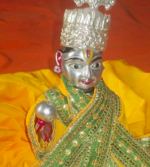





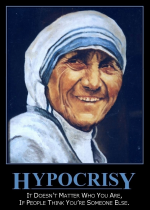
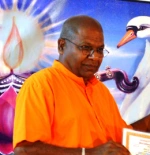

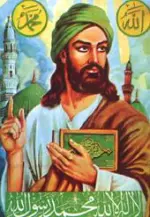
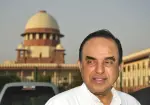



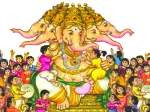



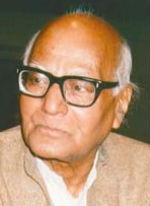

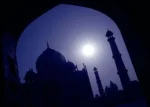




The video is now posted on Shree Vinekar’s page. Go to https://bharatabharati.wordpress.com/2012/09/19/demystifying-shree-ganesha-shree-vinekar/#comment-10660
LikeLike
Typo: point 1d should obviously be ““shvetAmbarAvR^ita manoharamanjugAtre”
There may be more spelling issues, but Hindus would know (or else would know to look all of this up) themselves.
LikeLike
1.
a) The very dhyAna shloka that opens both the Saraswati SahasranAmam (from the Skanda PurANam) and the Saraswati aShTottaram, says of Saraswati:
“shuklaambarA”, meaning “The Devi Clad In White Garments”.
Then her own name in the aShTottara repeats: “chitrAmbarA”, literally meaning “The Devi In Brighty-Coloured Dress”.
b) In addressing Saraswati who is standing right in front of him, the Guru of none less than the Devas — the All-Knowing Navagraha Brihaspati *himself* — declares about Saraswati Ambaa (and which dialogue can be found in the Saraswati Stotram of the shrI rudrayaamala):
“padmopaviShTAM kuNDalinIM shuklavastrAM manoharAM”
The relevant portion is “shuklavastrAM”: which means “she who is clad in white clothes”.
c) The opening shloka of the Saraswati Stotram from the PadmapurANam further describes the Hindus’ Ambaa Saraswati:
“shvetapadmAsanA devI shvetapuShpopashobhitA *shvetAmbaradharA* nityA shvetagandhAnulepanA”
The Ambaa Saraswati is That Devi Who Wears White Garments (is Eternal, and is seated on a white lotus seat, decorated with white flowers, smeared with fragrant white paste and so on.)
d) I’ll leave it at this last set of examples, although there’s definitely more.
The famous SarasvatI dhyanam which opens both Rishi Agastya’s Saraswati Stotram and the ShrI Siddha-SaraswatI Stotram declares:
“yaa shubhra-vastrAvR^itA”
This describes Saraswati as “the one with beautiful shining cloth draping her”.
A further shloka in the Siddha-Saraswati stotram then continues describing her as “the One with the charming body that is draped/wrapped in white clothes”:
“shvetambArAvR^ita manoharamanjugAtre”
These last two statements further underscore that Hindus’ Ambaa Saraswati’s beautiful, sacred body is indeed *covered* (avR^ita) by the beautiful resplendant white cloth (the shubhra shveta vastra): which accurately describes a saree (i.e. a cloth) draped around her glorious form.
LikeLike
2. Therefore, as seen in the stotra excerpts in my other comment, when Raja Ravi Varma (or any traditional Hindu) paints his Divine Mother Saraswati in a white Sari, he is not “imagining” it (nor is this even some latter day Hindu tradition). Rather, like all traditional Hindus who have ever created images of the Hindu Gods, he was merely sticking to the first-hand knowledge concerning the Devi which has been bequeathed to traditional Hindus in mantras and stotras capturing her by those who had personal darshanam of Saraswati Ambaa.
(As an aside: all these mantras and stotras — having been obtained in mantra-form by traditional Hindus upon their obtaining darshanam of the Gods in the Gods’ physical forms — are “apauruSheya”, *because* these mantras contain the very form/essence of Saraswati and the other Hindu Gods in mantra form. Since the Hindu Gods are not man-made, the mantras — which are *identical* to the same Gods in mantra-form — are not man-made either. All accurate mantras and stotras, in contrast to any cooked up ones that may appear shortly, belong to the Gods alone. They do not belong to the seers/Rishis who obtained the vision of the mantras upon the vision of the Gods. These were insights into the Gods granted by the Gods. As in Graeco-Roman, Daoist and other such religions, in Hindu religion too: only the Gods can ever teach accurately about themselves.)
Raja Ravi Varma has obviously stuck to the *truth* concerning Saraswati as far as was within his ability. This is why his drawings are accurate to Saraswati. Whereas there exist No images of the Hindu Gods by non-Hindus, regardless of what the latter may claim. By definition.
In contrast to traditional Hindu artists’ adhering to the truth, *lying* — such as by painting what is untrue (as M.F. Hussain did) and uttering falsehoods (as Salman Rushdie did) — is what christians/muslims indulge in. It’s sadly all they are able to do, since their pseudo-religion is an ideology of lies that evolving from its central lie: a patently non-existent entity called gawd/allah/jesus or something. That this nasty fictional entity is invisible and un-imageable *because* it is non-existent, is merely one of the many accurate and logical conclusions about islam-AKA-christianism that we can draw.
Considering that Rushdie is an obvious ignoramus on Hindu Gods/religion — and who knows what else — it’s best for his facade of literacy if he were to return to his sole area of expertise: writing “satanic verses” deserving of his religion. At least there he will have only his fellow-ignorami to contend with and he can at last come off looking ‘clever’ being contrasted against that company of even *more* dull-witted.
But I think I see now why Rushdie would dared to overstep by shooting his mouth off about Saraswati. Since he’s supposed to hail from Kashmir, he would have become seriously disturbed upon hearing that Hindu texts (including an Upanishad) famously declare that Saraswati is known as the “kAshmIrapuravAsinI”. She’s ever been residing there because it’s forever *her* place — just like the rest of the subcontinent is — and not that of the non-existent “gawd/allah/jesus” fiction or its believers. And Saraswati being “kAshmIrapuravAsinI” gives the lie to the muslim claim to Kashmir, since the only legitimate (i.e. native) Kashmiris are the Hindus, as per the name itself: “Kashmir” itself is a very religiously-Hindu naming term. So “Kashmiri” christians/muslims is in effect an oxymoron.
LikeLike
I have followed this Jihadi rascal for many years and recognisd early on his animus towards Hindus and their sacred, which far exceeds his anxiety about Islam, the reasons for which I need not elaborate. When that towering creative genius, V. S. Naipaul was asked about Rushdie, he loftily and mischievously admitted to having ‘heard the name’. When the shocked, idiot interviewer, asked about the Iranian bounty on Rushdie’s head, he replied memorably that he agreed ‘it was an extreme form of literary criticism’.
I once shared a taxi, more than twenty years ago, with Rushdie’s first literary agent, on a long journey through London and she confessed to being the chair of British literary agents for Rushdie. As she got out of the taxi when we reached her home, she smiled beatifically and said to me with wonderful English sarcasm and understatement that ‘it couldn’t have happened to a nicer man’!
I note that many educated Indians (oxymoron in most cases) dislike Naipaul for his unsparing depiction of Islamic shenanigans and idiocy and his prophetic critique of Afro-Caribbean anti-colonial political activism. But this man ranks with the greatest of Hindu creative geniuses, alongside Tagore, et. al. And I would say that without taking into account his two books on Islam, which political scientists and historians now regard as prophetic. And taking the totality of his life’s work, place the significance of his extraordinary insights into the human condition as equal to the lyrical imagination of Kalidas and piercing intellect of Bankim Chatterjee. I realise there are great classical and modern Tamil writers and poets, but I am only familiar with a tiny sample and that too only in translation.
By the way, I am amused to discover Naipaul is of Bengali-Nepali heritage, which his authorised biography reveals. The biography was reviewed with great insight by that acerbic writer, A. N. Wilson, father-in-law of that low, anti-Hindu creature, Sunil Khilnani (currently, Director, Indian Studies, Kings College, London University and soon to author yet another hagiography on Nehru, courtesy his warm ties with the leader of the villainous plunderers, Sonia Gandhi).
I would just add that entering in to discourse on Rushdie after a decade of constant abuse from him is little akin to unnecessarily re-inventing the wheel. The time for debate and discourse at this moment, when Hindus are well and truly fighting for their very survival, is quite over. It is now time for action and violent resistance and discourse, though possibly unavoidable, is not meaningful at all.
LikeLike
@vamanan, yes indeed she is clothed in wisdom, intelligence and glory! The Rig Veda mentions her 78 times!
Many thanks to IS for this beautiful reproduction of Raja Ravi Varma’s painting.
LikeLike
Lata Mangeshkar + Hridyanath Mangeshkar
in response to Vamanan.
LikeLike
Rushdie should thank his luck (He seems to be an agnostic so he need not thank God) and Hindu tolerance that he is not banned from entering India after such insulting remarks about the deity that is invoked by every Hindu student before starting his studies and worshiped by every Hindu for wisdom. Hussain showed his communal color and hate for Hindus by painting nude portraits of Saraswati and Mother India and most tasteless painting of Hanuman and Seeta (he was rightly exiled from India) and Rushdie shows his hate for Hindus by the remarks quoted in this article.
The Barkhas and Sagarikas of Indian media also should refrain from their anti-Hindu propaganda which seems to be paid for by the money bags from Christian and Muslim countries.
LikeLike
Sri Saraswati Devi painted in 1896 by Raja Ravi Varma. Today this oil-on-canvas painting is the model image for other Saraswati images.
LikeLike
The famous sloka on Saraswathi, ‘Yaa Kundhendhu tushaara Haara dhavaLaa’, says ‘yaa shuddha Vastraavrutha’ – ‘She who is bedecked in a white garment’. That answers Rushdie’s poser, Where have you seen Saraswathi clothed? I have seen her clothed with wisdom, intelligence and glory, but in Husain’s case, he has unclothed her with his malice and prejudice.
LikeLike
Salman Rushdie does not only evince a non-Hindu attitude but an anti-national attitude as well.
In newspaper interviews he has stated that Kashmir is for the Kashmiris (he is a Kashmiri himself) and the two occupying powers, India and Pakistan, should get out.
In that J & K includes Ladakh, a Buddhist-dominant area, and Jammu which is mostly Hindu, his statement is ill-conceived. He seems to be playing to the separatist gallery in Kashmir.
Does he think that pandering to the Kashmiri separatists, Iran will remove the price on his head (which remains unofficially and which has just been raised by some millions of dollars)?
LikeLike